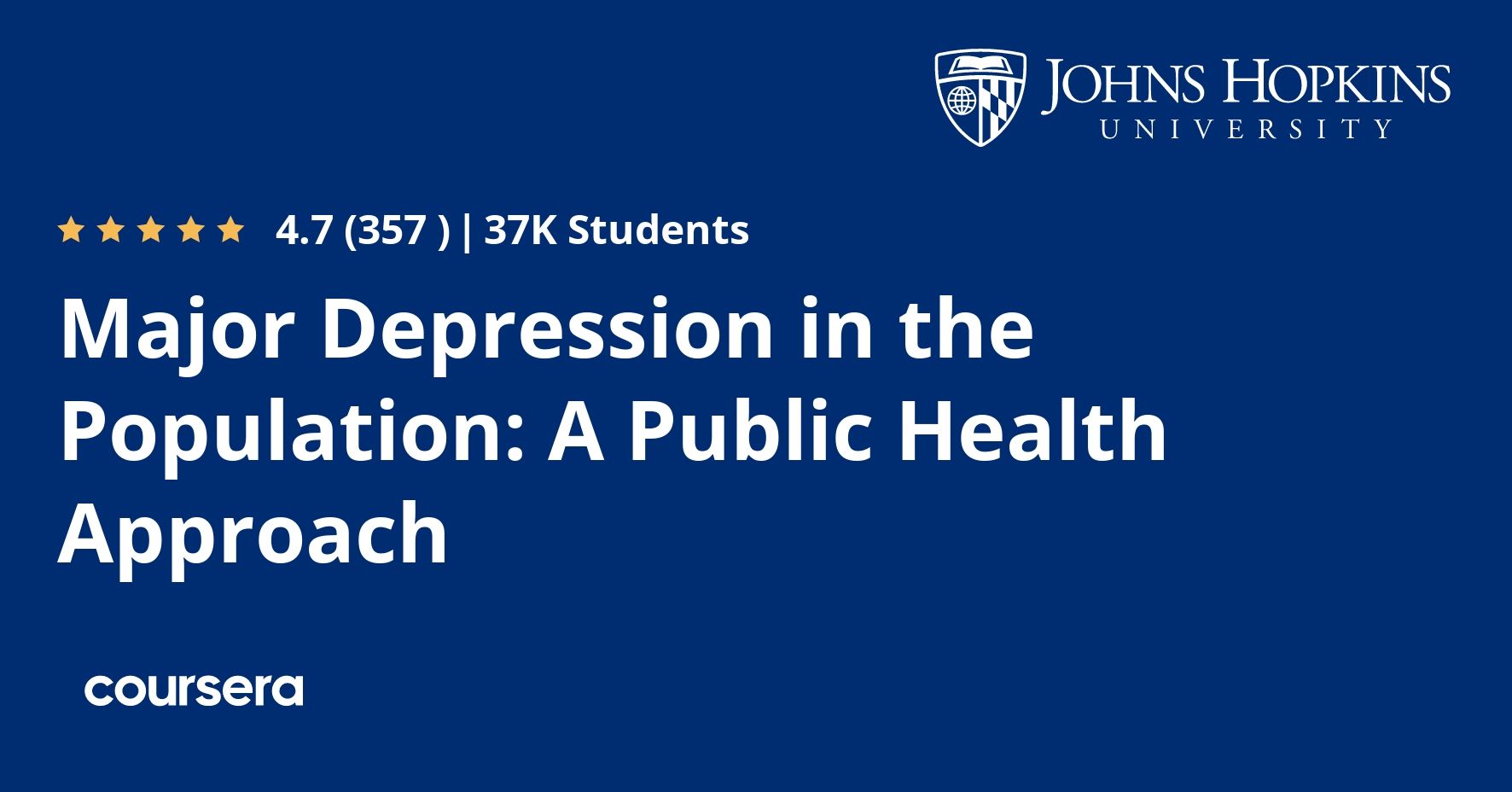Description
Public Mental Health is the application of the principles of medicine and social science to prevent the occurrence of mental and behavioral disorders and to promote mental health of the population. This course illustrates the principles of public health applied to depressive disorder, including principles of epidemiology, transcultural psychiatry, health services research, and prevention. It is predicted that by 2020 depressive disorder will be the most important cause of disease burden in the entire world! Every human being suffers from feeling depressed at some point or other, but only about one fifth of the population will experience an episode of depressive disorder over the course of their lives. This course illuminates the public health approach to disease, and the particular complexities of applying this approach to mental disorders, using depression as the exemplar.
What you will learn
Overview
Welcome to Major Depression in the Population: A Public Health Approach. Let’s take a few moments to introduce the course before we dive into our first lessons.
What is Major Depression and Why Is It Important? The Burden of Depressive Disorder in the Population
This week, we will be focusing on the definition of major depression and the methods that we use for measuring its effect on populations.
Depression in Low- and Middle-Income Countries: A Closer Look at Maternal Depression
This week we will be covering depression from a global public health perspective.
Basic Concepts of Epidemiology as Applied to Depression
This week we take advantage of what we know about major depressive disorder to examine major epidemiologic research designs, including the case control design, the cohort design, and the study of diseases in time and space.
The Search for Etiologic Clues
This week the focus is on possible causes for depressive disorder, including inheritance, stress, social life, work life, and the evolution of modern living.
The Search for Etiologic Clues: Lesson Choices
Choice 1: You are the coordinator of an international nutrition program in refugee camps, including a refugee camp in Tanzania. Most of the refugees in this camp have fled violence from the Democratic Republic of the Congo, and the size of the camp is increasing because of the intensification of armed violence there. The nutrition organization that you have been working for has been implementing programs to promote breastfeeding, and appropriate infant and young child feeding practices. You have been told that program staff are facing difficulties, and you decide to visit the site to see for yourself what is going on. In your meeting with some of the community health workers who are implementing the program, you hear of women living in very challenging circumstances. A group of women seems to be very tired and have lost the energy to engage with daily routines. You suspect that mental health may play a role, and decide to ask further questions and write a report about this to your organization’s headquarters. | Choice 2: A young entrepreneur from Oklahoma named Rodney Johnson created a household cleaning product made from byproducts of the corn industry. This product, called Solvit, is very good at cleaning up grease and dirt, and was more effective than many other well-known products such as Mr. Clean, Fantastik, and Lysol. Mr. Johnson started marketing the product in 1992 at stores in his native Oklahoma, and also on the World Wide Web. Twenty years later this product is the most widely used cleaning agent in North America, although it still has not been introduced in several states. In 2012 Consumer Reports magazine determined that the product contained solvents that might cause depressive disorder. It asked the Consumer Products Safety Commission to ban the product. The Institute of Medicine was asked for its advice. The IOM learned that you had taken this course and has asked you to consult on epidemiologic evidence and methods that might support the claim that Solvit produces depressive disorder.








